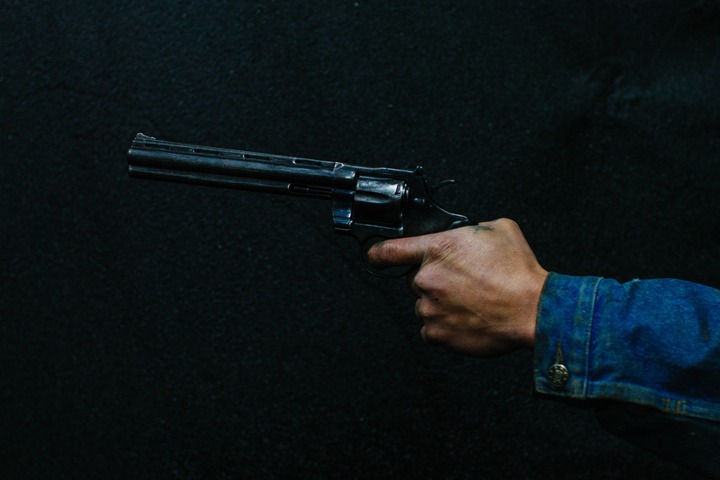
Under Minnesota law, assault in the second degree is a serious criminal charge. This crime encompasses a range of offenses involving the use of weapons or objects capable of causing bodily harm or death.
A Minnesota assault with a dangerous weapon charge can result in serious penalties, including incarceration, fines, and many collateral consequences.
If you have been arrested or charged with 2nd-degree assault with a deadly weapon, you should consult with a St. Paul criminal defense lawyer as soon as possible. An attorney can help you understand your rights and mount a viable defense to these charges.
At Arechigo & Stokka, our team of St. Paul criminal defense lawyers have over 20 years of experience defending the rights and freedoms of good people charged with serious crimes.
We understand the impact that a conviction for a violent crime can have on your record, and we will stand by your side throughout the process to ensure you receive the defense you need, deserve, and are constitutionally entitled to.
To get started with us today, please contact us to schedule a consultation.
Degrees for Assault with a Dangerous Weapon in Minnesota
Minnesota classifies assault offenses into several degrees, each associated with varying levels of severity and related penalties. The degrees of assault in Minnesota include the following:
- First-degree. This involves the intent to cause great bodily harm or death with premeditation.
- Second-degree. This entails intentionally causing substantial bodily harm or using deadly force.
- Third-degree. This includes causing substantial bodily harm, assaulting a peace officer, or recklessly using a dangerous weapon.
- Fourth-degree. This involves assaulting someone with the intent to cause fear of bodily harm.
- Fifth-degree. This can involve physically hurting or intentionally causing fear of harm to another.
It is important to note that various factors can impact what degree of assault the government imposes on the accused.
2nd-Degree Assault with a Deadly Weapon
Assault with a dangerous weapon (felonious assault) is a serious criminal offense under Minnesota law.
This offense involves intentionally causing substantial bodily harm to another or using or attempting to use deadly force against another.
However, unlike 1st-degree assault, 2nd-degree assault is not a specific intent crime. Thus, premeditation is not an element of 2nd-degree assault in Minnesota.
Substantial Bodily Harm
Substantial bodily harm involves the intentional infliction of substantial bodily harm.
Generally, substantial bodily harm involves causing significant injuries, even if they are not life-threatening.
Examples of substantial bodily harm can include broken bones, lacerations, or any other injuries that require medical attention.
Use of Deadly Force
A person can be charged with 2nd-degree assault if they intentionally use or attempt to use deadly force against another.
If you are convicted of assault with a dangerous weapon, you can face up to 10 years in prison and fines of up to $20,0000.
The severity of the penalties depends on things like whether the alleged perpetrator used a dangerous weapon and the characteristics of the victim.
Defenses to 2nd-Degree Assault with a Dangerous Weapon
Defenses for an assault with a dangerous weapons charge in Minnesota depend on the unique facts and circumstances of the charges. However, some relevant defenses may include the following:
- Self-defense,
- Lack of intent,
- Mistaken identity,
- Alibi,
- Inadequate evidence,
- Constitutional violation, and
- Castle Doctrine or right to defend.
The viability of a defense hinges on various factors. However, an experienced criminal defense attorney can help you determine what defense is best suited for your situation.
Have You Been Charged with 2nd-Degree Assault with a Dangerous Weapon?
If you were recently arrested and charged with assault with a deadly weapon, the dedicated St. Paul criminal defense lawyers at Arechigo & Stokka are here for you.
We have decades of experience handling hundreds of cases involving serious felony and misdemeanor crimes, including those involving charges of 2nd-degree assault with a dangerous weapon.
We recognize that, when you’re facing charges of this nature, there is no room for error, which is why we take a comprehensive approach to every case we handle.
To learn more, and to schedule a free consultation today, give Arechigo & Stokka a call. You can also connect with us through our online contact form and one of our violent crimes defense lawyers will be in touch with you shortly.
FAQ: What Is Considered a Dangerous Weapon in MN?
Minnesota law broadly defines “dangerous weapon.” Generally, dangerous weapons are any object, instrument, device, or substance that is designed to inflict bodily harm or death. One example being a knife.
Moreover, certain things are considered “inherently dangerous” under Minnesota law. Using an inherently dangerous weapon can lead to more severe charges and penalties.
FAQ: What Are Some Examples of Dangerous Weapons Under Minnesota Law?
There are various objects, instruments, and devices that can be considered a “dangerous weapon” under Minnesota law.
Courts often classify firearms, such as rifles, shotguns, and handguns, as dangerous weapons. Further, using these items without required permits can lead to heightened charges.
Moreover, knives, particularly switchblades and daggers, are often considered dangerous weapons. Other devices, like brass knuckles, batons, and makeshift weapons, and even vehicles may be seen as dangerous weapons.
FAQ: How Do Courts Determine Whether a Weapon Is Dangerous?
In most cases, Minnesota courts classify a weapon as dangerous by looking at the specific circumstances of the alleged offense and the weapon’s characteristics.
Often, courts look at the user’s intent and whether they intended to use the object to elicit fear or cause harm.
Further, courts review the object’s design and use to determine whether the object has the potential to inflict damage.
Another important consideration is the way the accused used the weapon during the event. Additionally, courts may determine the legality of the object, device, or instrument.
It is worth noting that an actual injury does not need to take place for a 2nd-degree assault with a dangerous weapon to exist.
So long as there is a fear-based assault and dangerous weapon involved, there may be 2nd-degree assault with a dangerous weapon charge.
Dangerous weapon determinations are generally made on a case-by-case basis. Accordingly, it is essential that anyone accused of this offense consult with an experienced criminal defense lawyer.



